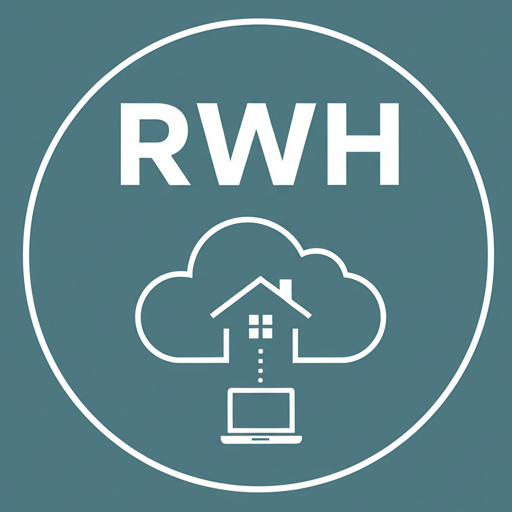Remote work is often glorified for the flexibility it offers—working from the comfort of your home, setting your own hours, and avoiding the daily commute. However, there’s a side to remote work that’s rarely discussed: the mental health struggles that many workers face, including anxiety, burnout, and the isolation that comes with working from home. While I’ve personally found remote work to be a game-changer, especially in overcoming the stress and pressure of social interactions, I’ve also had my fair share of mental health battles that I’ve had to navigate.

The Rise of Anxiety and Burnout in Remote Work
When I first transitioned into remote work, I was initially relieved. I no longer had to face people every day, especially in meetings or casual office interactions. As someone who has always struggled with social anxiety, remote work provided the solitude I craved. But as time went on, I realized that there were still challenges I had to face. Anxiety became a constant companion, especially when it came to meetings. Even now, as a project manager, I often experience anxiety attacks before team meetings. The weight of expectations and the fear of saying something wrong can be overwhelming, even after years of experience.
Over the years, I’ve learned to push through these moments by telling myself, “It’s just 30 minutes; I can do this.” This simple mantra helps me focus on the task at hand and suppress the panic that tries to creep in. But not everyone has the tools to manage anxiety on their own, especially when it’s compounded by other issues like burnout.
Burnout, in particular, can be a silent killer. I’ve been there—working myself to the bone and finding no joy in my job anymore. In my early career, when burnout hit, my go-to escape was drinking. I’d call in sick the next day or show up late, simply to cope with the pressure. There was no support in place, no discussions about mental health, and no way to process the overwhelming emotions that came with feeling “burned out.” Over time, I learned that isolation only made things worse. What helped me the most was taking breaks, whether through gaming after work or casual chats with my colleagues.
Combating Mental Health Struggles in Remote Work
For me, combating these struggles was about establishing boundaries and making time for self-care. I make sure to schedule breaks within my work hours, even if it’s just stepping away from the computer for a few minutes to reset. Unfortunately, some remote jobs come with the added pressure of activity monitors and time checks. These can feel invasive, especially when they track activity on your personal computer. For me, this would be an immediate dealbreaker. If a company installed a monitoring system on my personal device, I’d consider resigning on the spot. Privacy is important, and these systems can contribute to increased stress.
But what I’ve found works, and what I try to encourage in my team, is the importance of taking breaks, power naps, and even engaging in lighthearted activities like gaming or chatting after hours. I often suggest a “group huddle” where we can talk about anything—not just work-related issues. This informal approach helps release stress and fosters camaraderie, which ultimately contributes to better performance.
In my team, I try to lead by example. I’m often the first to rant or share a struggle, showing them that it’s okay to express frustration or stress. This helps build an environment where everyone feels safe to be vulnerable and open about their mental health without fear of judgment.
The Work Environment: Flexibility, Fun, and Customization
One of the perks of working in a startup or a non-corporate software development shop is the relaxed and dynamic work environment. Gone are the days of drab corporate cubicles. Instead, many startups are adopting open spaces with large tables where everyone can see what others are working on, colorful walls that inspire creativity, and chill areas designed to make work feel less like a grind and more like fun.
Tech leaders in such environments often encourage team bonding activities, like “game night,” where the team plays their favorite games together—whether it’s Counter-Strike, Diablo 3, or Call of Duty Warzone. Others have billiard tables or ping pong tables on the office floor. These activities help break up the monotony and foster a more relaxed, positive atmosphere where employees can unwind and bond.
For remote workers, the ability to customize your workspace is a game-changer. The flexibility to design your own environment for maximum comfort and productivity can make a huge difference in your well-being. I, for one, painted my office walls yellow—a color known to boost energy and creativity. I also set up a minimalist desk to minimize distractions and help me stay focused. These small changes helped create an environment where I could thrive without feeling overwhelmed by my surroundings.
A Note to Managers and Supervisors: Your Role in Supporting Mental Health and Well-being
As a manager or supervisor, you have the power to influence the mental health and well-being of your team, even in a remote work setting. While company policies might not always prioritize mental health, you are in a unique position to create a supportive environment. Even a simple 2-3 minute chat with your team members—asking, “Hey, what’s up?”—can make a huge difference. Listening actively and responding with empathy shows your team that you care and are invested in their well-being.
Sometimes, it’s not just about reading a message or seeing an email—it’s about taking the time to truly listen and give a genuine response. When your team feels heard, they’re more likely to feel supported and motivated, which leads to a more productive work environment. Encourage open-door policies, and make sure your team knows they can approach you whenever they need help.
It’s easy to fall into the trap of telling your team that you’re available to help but then shutting them down with responses like “I don’t have time” or “I can’t do that right now.” While time constraints are a reality, it’s important to recognize that employees may need a brief moment of your time to talk, especially when they’re going through a difficult time. These small gestures can help your team feel valued and reduce feelings of isolation.
Remember: your team is the lifeblood of your company. If they fail, you fail. But it’s crucial to distinguish between an employee who is struggling and one who is simply a “bad employee.” A bad day doesn’t mean a bad worker. As leaders, we must take the time to understand the context behind performance issues. When you show empathy and support, you not only help your team through tough moments but also build a culture of trust and respect.
This approach can even be reflected in performance metrics. A report that highlights how your team’s productivity improved due to better communication, mental health support, or breaks can demonstrate the tangible benefits of fostering a supportive work environment. It’s not about spoon-feeding employees; it’s about understanding their needs and providing a space where they can thrive.
Conclusion: Navigating Mental Health Challenges in Remote Work
Mental health struggles, including anxiety and burnout, are an unfortunate reality for many remote workers. But with the right strategies in place—such as regular breaks, creating a supportive environment, and encouraging open communication—remote work can become a more sustainable and fulfilling experience. For managers and supervisors, understanding and addressing the mental health needs of your team can make all the difference in creating a positive, productive work culture.
By being mindful of your own mental health and actively supporting your team’s well-being, you can help create a healthier remote work environment for everyone involved.
